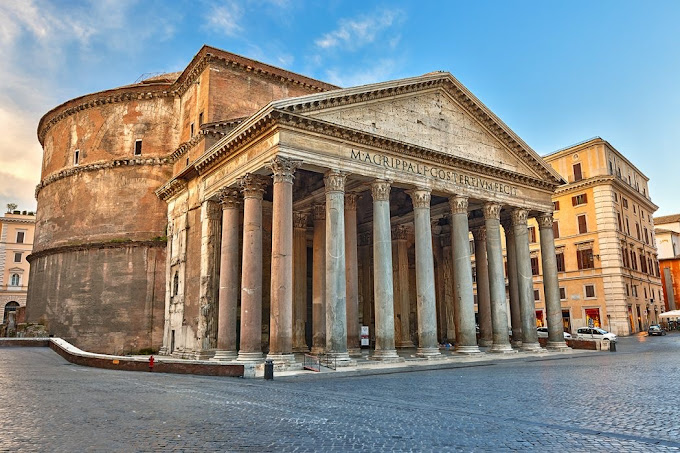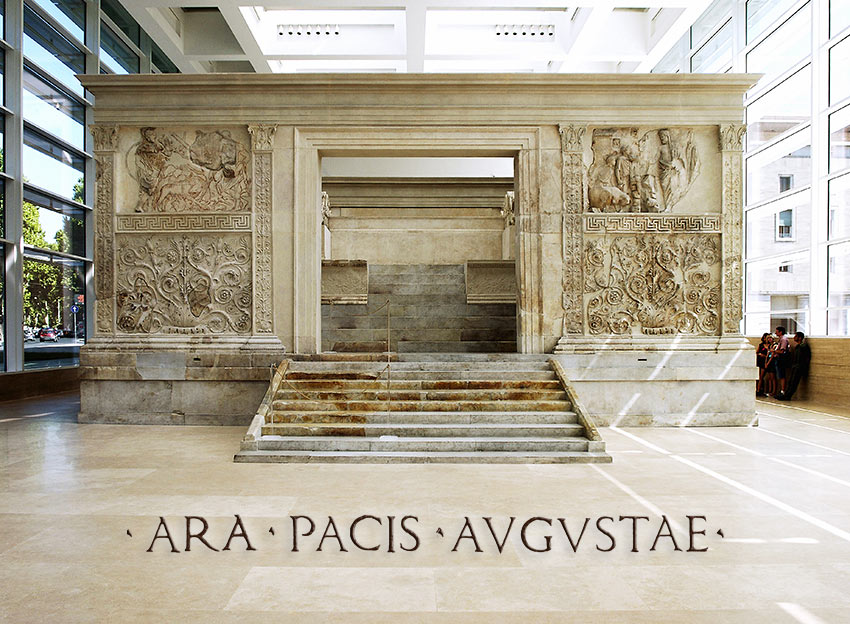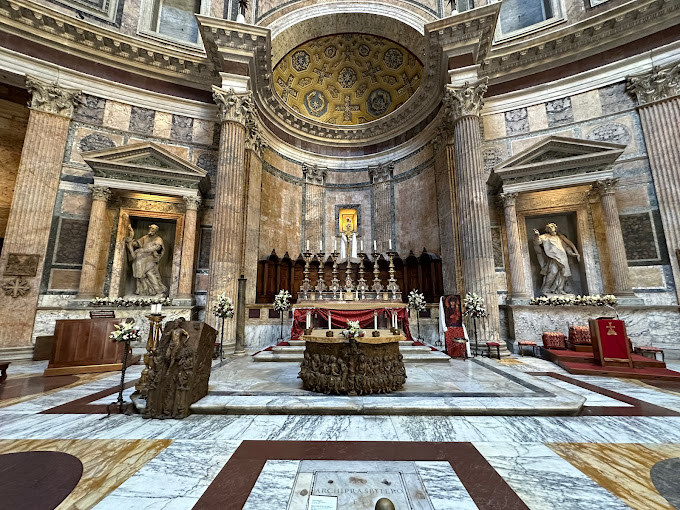My sojourn to Italy this summer unleashed a torrent of cascading emotions. Memories intermingled with anticipation, exultation and incipient joy. Yet such feelings were also accompanied by a brief bout of sadness.

Upon arrival, I pondered all those poor souls who wouldn’t have an opportunity to visit the “seat of civilization.” Imagine people living in Rome, New York; Romulus, Michigan; or Italy, Texas, who might never set foot on actual Italian soil; never experience Italy’s treasure trove of ancient, medieval and modern marvels; never traverse Piazza Navona—whose vast underground houses what was once the Stadium of Domitian (Emperor Titus Flavius Domitinus), or Circus Agonalis.
Domitian’s’ Stadium is but one of Italy’s many UNESCO World Heritage Sites. In fact, il bel Paese holds the global record. No other nation on Earth boasts more World Heritage Sites than lo Stivale (‘the Boot’).
Italy’s kaleidoscope of wonders induces a sense of cultural jubilation.
Centuries before psychiatrist Heinz Hermann conjured up the so-called Jerusalem Syndrome to denote the spontaneous psychosis or hysteria afflicting tourists to that tortured city, Samuel Johnson averred: “A man who has not been in Italy is always conscious of an inferiority, from his not having seen what it is expected a man should see.”
Johnson knew whereof he spoke.
As soon as I stepped foot on terra italica, I was enraptured. Leonardo da Vinci himself would be proud beyond words of the sleek, futuristic aeroporto that bears his name. Little wonder that it has been hailed as the finest airport in Europe, perhaps the world.
From the runway to the security checkpoint to customs to baggage claim, the entire operation was smoothly efficient, orderly and easily navigated. Indeed, this wondrous metropolis within a city became a welcoming gateway to the Eternal City.
Leonardo da Vinci–Fiumicino puts American airports—JFK, Newark, LaGuardia, Logan, Dulles and LAX— to shame. Da Vinci’s gleaming kiosks, coffee bars, restaurants and duty-free shops seduce visitors upon entry.
As did Rome’s Hassler Hotel—my home away from home—or as the tag line avers: the ‘STAIRWAY TO HEAVEN’. Situated on Trinita` dei Monti, this heavenly albergo made my stay in the Eternal City a residential and logistical delight.
Whether in the morning or ‘on an evening in Roma’, one is engulfed in history. The Hassler is but a stone’s throw from “La Scalinata` di Trinita dei Monti,” or La Scalinata—as Italians call it. Americans and other foreigners tend to refer to this structure as the Spanish Steps. (But it is neither French—though a Frenchman funded it—nor Spanish.)
La Scalinata was designed by an Italian architect, Francesco De Sanctis, in 1723, to link the then Bourbon Spanish Embassy to the Trinità dei Monti church.
My first foray was actually a late-night excursion to la Fontana di Trevi. Built in the 1700s—and erected on the site of an ancient Roman water source (Lying beneath the Villa Medici it ends in the Trevi Fountain and still remains in use today—la Fontana is composed of the same travertine stone as the Colosseum.
As such, this iconic symbol of Roma Aeterna spans the centuries, linking modern Rome to its fabled past.
Then there’s the Aqua Virgo, a 2,000 year-old aqueduct originally built in 19 B.C. to ferry water to the Baths of Agrippa near the Pantheon.

Succumbing to a narcissistic urge, I had a photo of myself taken against the backdrop of la Fontana di Trevi. To my delight, a female passerby winked, giving me her seal of approval!
Talk about la dolce vita!
Unlike the capitals of other nations, the Eternal City is a living artifact whose modern growth—must be balanced against the cultural requirements of a millennial patrimony.
Among more recent archaeological discoveries are two ancient underground structures: the frescoed Theater of Maecenas, Augustus’s arts adviser, on the Esquiline Hill; and Hadrian’s Auditorium, dating from 135 A.D., which was uncovered during excavation work on the Piazza Venezia metro (subway) line.
Another historical spot—the Largo di Torre Argentina—which was designated as an archaeological heritage site in the 1920s, is now a full-fledged archaeological park open to the public. It is the site where Julius Caesar was assassinated on March 15, 44 BC. And it’s only a few minutes away on foot from Piazza Navona. (The Torre Argentina takes its name from the city of Strasbourg, France. Founded in 12 BC by the Romans it was known as Argentoratum.)
My bliss centered on imperial Italy’s Pax Romana, an epoch Edward Gibbon aptly described: “The vast extent of the Roman empire was governed by absolute power, under the guidance of virtue and wisdom.” (Ironically, social media news feeds appear to confirm that many Tik Tok members also share my magnificent obsession with l’impero.) Per Bacco!
And speaking of the Roman Peace, one of my key objectives while in the Eternal City was to visit the Ara Pacis Augustae (Altar of Augustan Peace), an artistic wonder adopted by the Italic Institute. In fact, back in 1987, the IIA’s founders, John Mancini and the late Stefano Gristina presented a bronze plaque commemorating its 2,000th anniversary and our ties to this ancient symbol of our Italian unity
So familiar was my knowledge of this Altar beforehand that I finally understood the wisdom of Lorenzo Pietro Berra’s adage: “It was déjà vu all over again.” That is, just as with my trek to Pompeii many years ago, I was transported to the ancient past. I was home again, back at the dawn of the Pax Romana.
The Ara Pacis, which was decreed by the Roman Senate on July 4, 13 B.C., celebrates the final integration of Italian nation under Rome and the start of the Pax Romana. This year, the Ara Pacis also included an exhibit tracing the origins of Roman law—from the ‘Twelve Tables’ to Justinian’s Corpus Iuris Civilis—and how it formed the basis of the Western legal tradition.

Later that day, I journeyed to the Pantheon, which lies in the heart of Rome. A short stroll from la Scalinata, la Fontana di Trevi and Piazza Navona, it is majestic beyond measure. Built in 25 BC by Marcus Agrippa, who was a close friend, general, and consul under Caesar Augustus, this colossal temple was reconstructed and fully completed by the Emperor Hadrian in AD 125. Astonishingly, the Pantheon with its amazing dome has been in continual service for the last 2,000 years!
The outer inscription states that “Marcus Agrippa, the son of Lucius, three times consul, built this.”—courtesy of Hadrian, who dedicated the Pantheon to its original builder. According to classics Professor Amanda Claridge, “the Pantheon provided a setting–not a temple in the conventional sense–in which the living emperor would appear in the company of the gods.” Entranced whilst beneath its glorious dome I, too, felt myself in the company of the gods.
The next day, however, a funny thing happened when I reached the Colosseum. A tour guide, possibly German, was waxing historic about Rome’s Colosseo in English. Though not part of the tour group, I anxiously listened to his discourse. To my surprise, he engaged in a Joe Friday summation of the Colosseum’s history, listing just the facts:
To this day, the Colosseum remains the world’s largest amphitheater. Built in 80 AD, it seated between 50,000 to 80,000 people. And contrary to fictional cinematic depictions, the Colosseum’s gladiatorial contests resembled modern-day boxing matches. Fighters were divided into classes according to their size and fighting style; and referees and doctors monitored the combat. The tour guide also described the reenactment of sea battles staged in the Colosseum; the arena was flooded for boats!
Most revelatory of all, though, he definitively stated that Christians were not slaughtered as martyrs in the Colosseum! Indeed, there exists no historical evidence for such a calumny. To say that I was overjoyed would be an understatement.
The tour guide noted my reaction and enlisted me (in good fun) as an imaginary gladiator. (I subsequently went on to denounce Hollywood’s distorted imagery regarding il Colosseo. This guida turistica graciously allowed me to speak my mind but reminded the audience that we weren’t working together. Still, he did note that what I’d described was his next topic of discussion.
Minutes later, I crossed the street and stood in awe of yet another monumental Roman site: l’ Arco di Costantino—the Arch of Constantine.
My summer sojourn was a sparkling Roman holiday. Yes, I enjoyed the best spaghetti alla carbonara in creation. And, yes, it was the season of my elixir of choice—the Negroni Sbagliato. Moreover, no day was complete without the ubiquitous and deeply flavorful caffè.
Ultimately, however it was a journey of embracement—and the joy of becoming one with the immeasurable majesty of Italic civilization. -RAI




I stand in awe of the Pantheon……and its link and continuation of eternal Rome….thankfully it was preserved and saved because it was co-opted into a church….but the original concept also was part of Roman inclusiveness, as a temple to all faiths(gods). Part of the genius of the Roman empire, often overlooked, was its ability to rule diverse nations and cultures for centuries.
As a total aside, I cannot figure out why you cannot find a rich cup of coffee here, at either high-brow or low-brow establishments, especially when even driving on the autostrada in Italy or Spain, it is just an amazing normal expectation…a culinary mystery..
While some of us stand in awe, millions of Italian Americans could care less about
their Italian heritage! So many know so little of what you have written. Let us hope that they can be educated to appreciate what you have seen.
I have always said I feel such pity for all the humans who have never experienced Rome, and all that goes along with being Italian.
My family comes ftom Provincia di Frosinone, about an hour outside if Rome.
My surname, Terenzio has ancient Roman roots.
All this brings me such joy and pride!
Mille grazie!